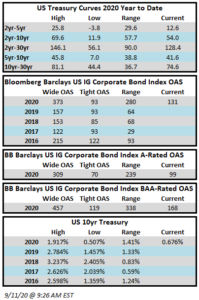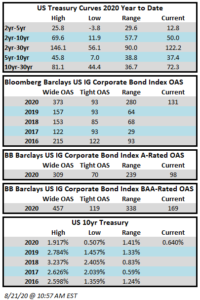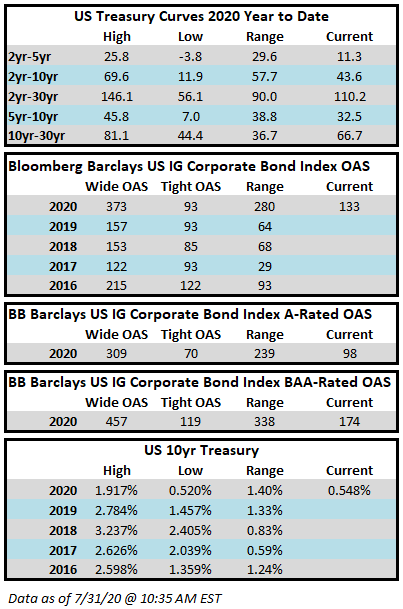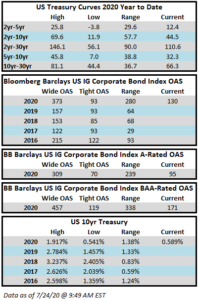Fund Flows & Issuance: According to a Wells Fargo report, flows week to date were -$0.7 billion and year to date flows stand at $50.0 billion. New issuance for the week was $8.1 billion and year to date issuance is at $297.6 billion.
(Bloomberg) High Yield Market Highlights
- The riskiest junk bonds are outperforming in a week where valuations overall have held up relatively well amid equity market volatility. Heavy supply meanwhile is expected to carry on with about another $3 billion slated to be sold on Friday.
- High-yield valuations have been resilient despite the stock selloff, and even in the face of a very active new issue market, Barclays Plc strategists led by Brad Rogoff wrote in a note Friday
- After a strong run though, investors could look to swap out of unsecured bonds into secured bonds and loans within the same capital structure, adding security at a time when default rates are rising and recoveries are lower
- A key gauge of credit risk for junk-rated firms is rising this morning, while stock futures are rebounding
- CCCs have gained 0.08% this week, while the broader junk bond index is down 0.15%
- While CCCs are gaining, BBs and single Bs have lost 0.3% and 0.06%, respectively
- Junk bonds spreads were little changed at 493bps more than Treasuries, down just 1bps. Yields fell 2bps at 5.54%
(Business Wire) Hess Announces Oil Discovery at Redtail, Offshore Guyana
- Hess Corporation announced another oil discovery offshore Guyana at the Redtail-1 well, the 18th discovery on the Stabroek Block, which will add to the previously announced gross discovered recoverable resource estimate for the block of more than 8 billion barrels of oil equivalent.
- Redtail-1 encountered approximately 232 feet of high quality oil bearing sandstone and was drilled in 6,164 feet of water. The well is located approximately 1.5 miles northwest of the Yellowtail discovery and is the ninth discovery in the southeast area of the block.
- In addition to the Redtail-1 discovery, drilling at Yellowtail-2 resulted in the discovery of additional reservoir intervals adjacent to and below the Yellowtail-1 discovery. Yellowtail-2 encountered 69 feet of high quality oil bearing reservoirs, which comprise the 17th discovery on the Stabroek Block. This resource is currently being evaluated for development in conjunction with other nearby discoveries.
- “The Redtail-1 and Yellowtail-2 discoveries further demonstrate the significant exploration potential of the Stabroek Block and will add to the recoverable resource estimate of more than 8 billion barrels of oil equivalent,” CEO John Hess said. “Redtail is the ninth discovery in the southeast area of the block which we expect will underpin future development.”
- The Stabroek Block is 6.6 million acres. ExxonMobil affiliate Esso Exploration and Production Guyana Limited is operator and holds 45 percent interest in the Stabroek Block. Hess Guyana Exploration Ltd. holds 30 percent interest and CNOOC Petroleum Guyana Limited, a wholly-owned subsidiary of CNOOC Limited, holds 25 percent interest.



